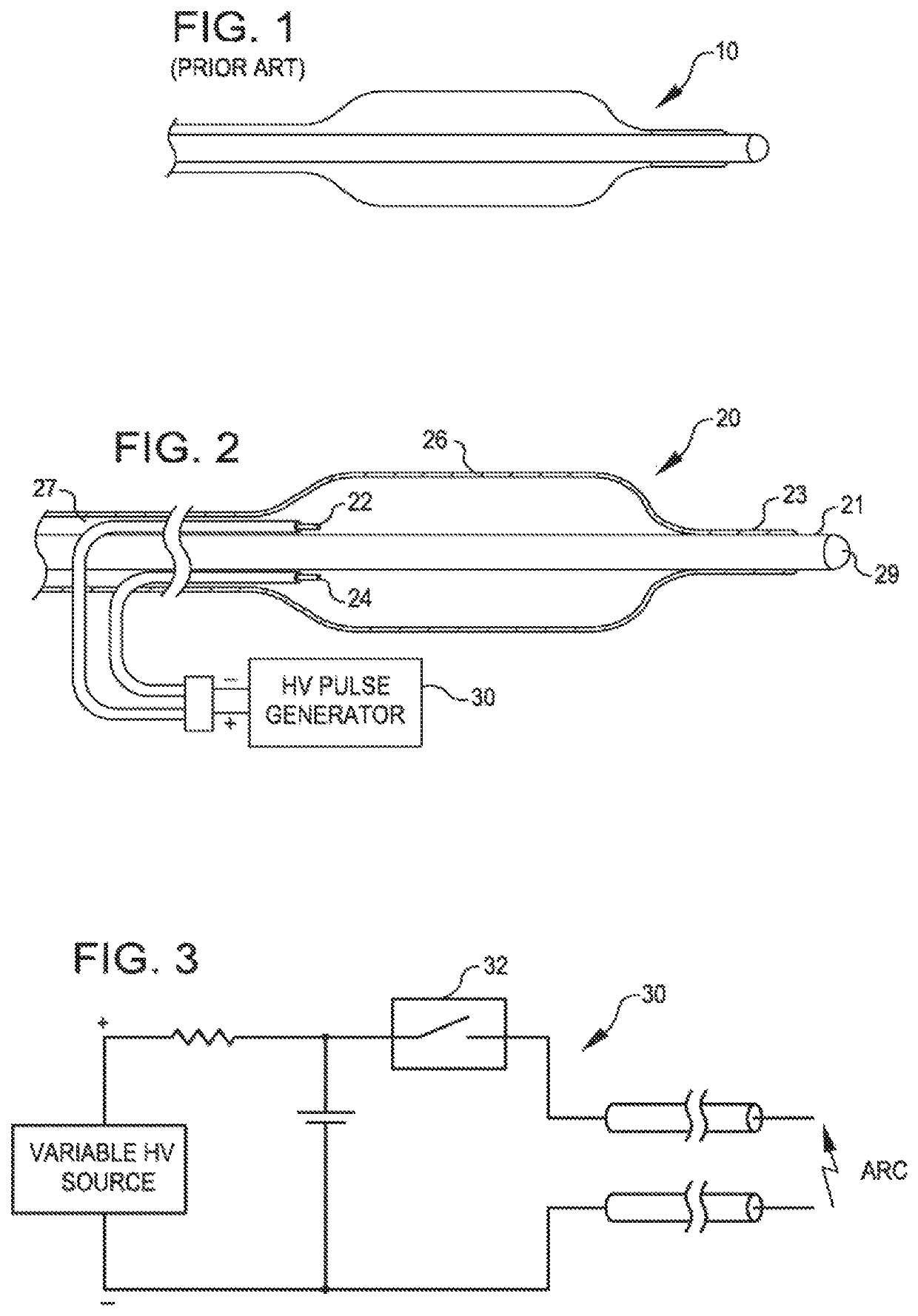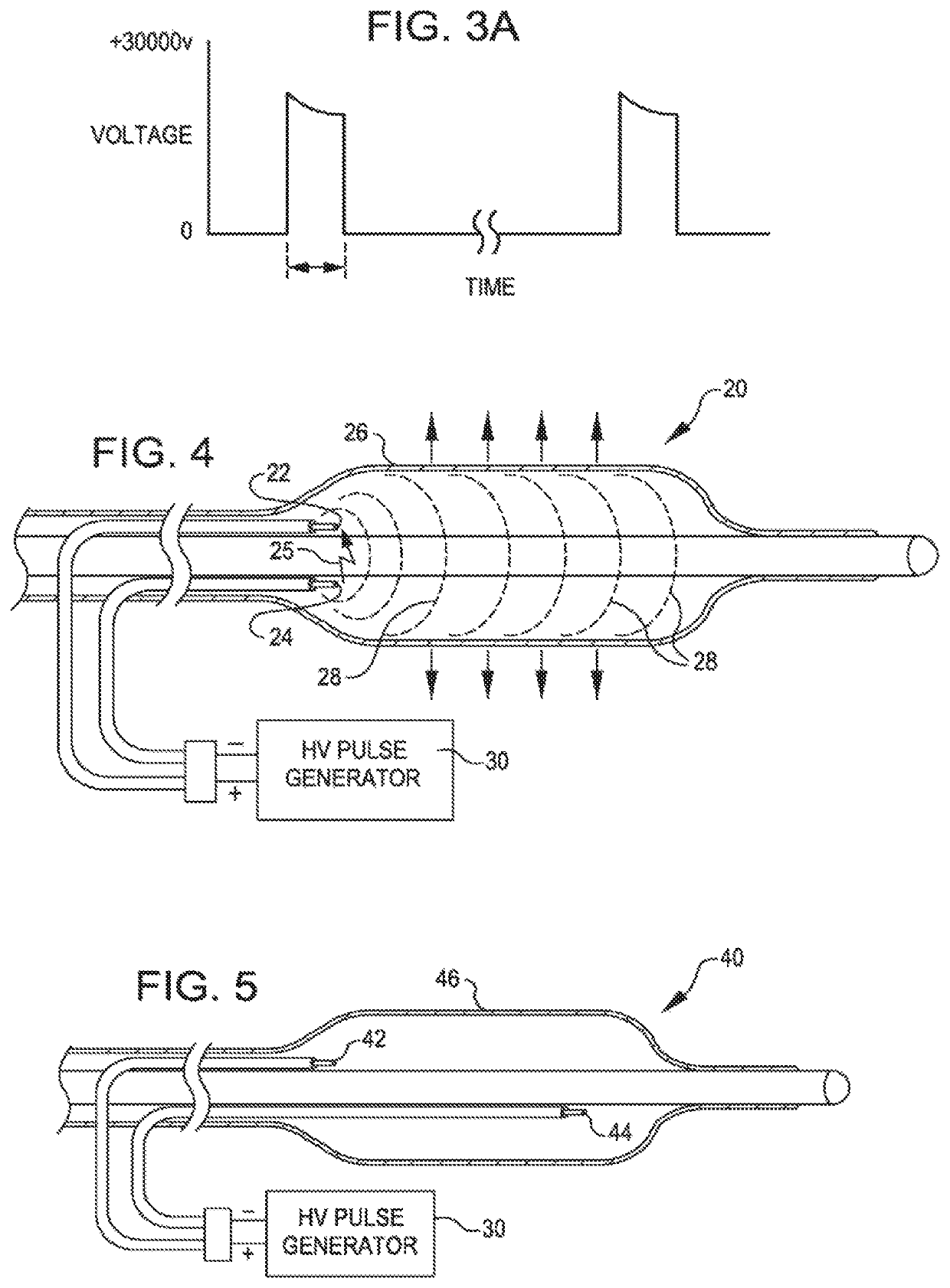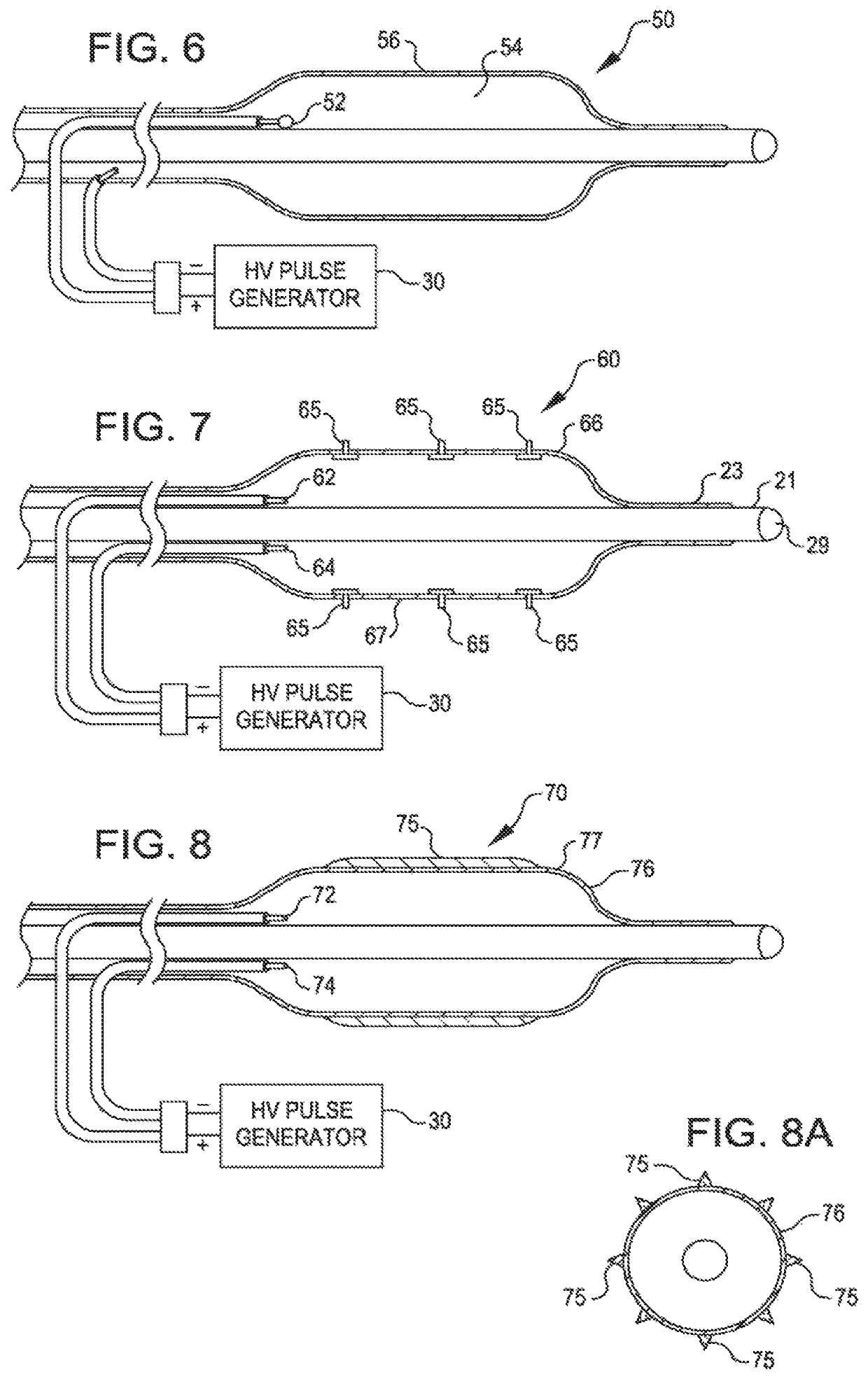Two-stage method for treating calcified lesions within the wall of a blood vessel
a blood vessel wall and calcification technology, applied in the field of treatment system for percutaneous coronary angioplasty or peripheral angioplasty, can solve the problems of rebound, dissection, thrombosis, undue stress on the free wall of the blood vessel,
- Summary
- Abstract
- Description
- Claims
- Application Information
AI Technical Summary
Benefits of technology
Problems solved by technology
Method used
Image
Examples
Embodiment Construction
[0051]FIG. 1 is a view of the therapeutic end of a typical prior art over-the-wire angioplasty balloon catheter 10. Such catheters are usually non-complaint with a fixed maximum dimension when expanded with a fluid such as saline.
[0052]FIG. 2 is a view of a dilating angioplasty balloon catheter 20 according to an embodiment of the invention. The catheter 20 includes an elongated carrier, such as a hollow sheath 21, and a dilating balloon 26 formed about the sheath 21 in sealed relation thereto at a seal 23. The balloon 26 forms an annular channel 27 about the sheath 21 through which fluid, such as saline, may be admitted into the balloon to inflate the balloon. The channel 27 further permits the balloon 26 to be provided with two electrodes 22 and 24 within the fluid filled balloon 26. The electrodes 22 and 24 are attached to a source of high voltage pulses 30. The electrodes 22 and 24 are formed of metal, such as stainless steel, and are placed a controlled distance apart to allow ...
PUM
 Login to View More
Login to View More Abstract
Description
Claims
Application Information
 Login to View More
Login to View More - R&D
- Intellectual Property
- Life Sciences
- Materials
- Tech Scout
- Unparalleled Data Quality
- Higher Quality Content
- 60% Fewer Hallucinations
Browse by: Latest US Patents, China's latest patents, Technical Efficacy Thesaurus, Application Domain, Technology Topic, Popular Technical Reports.
© 2025 PatSnap. All rights reserved.Legal|Privacy policy|Modern Slavery Act Transparency Statement|Sitemap|About US| Contact US: help@patsnap.com



